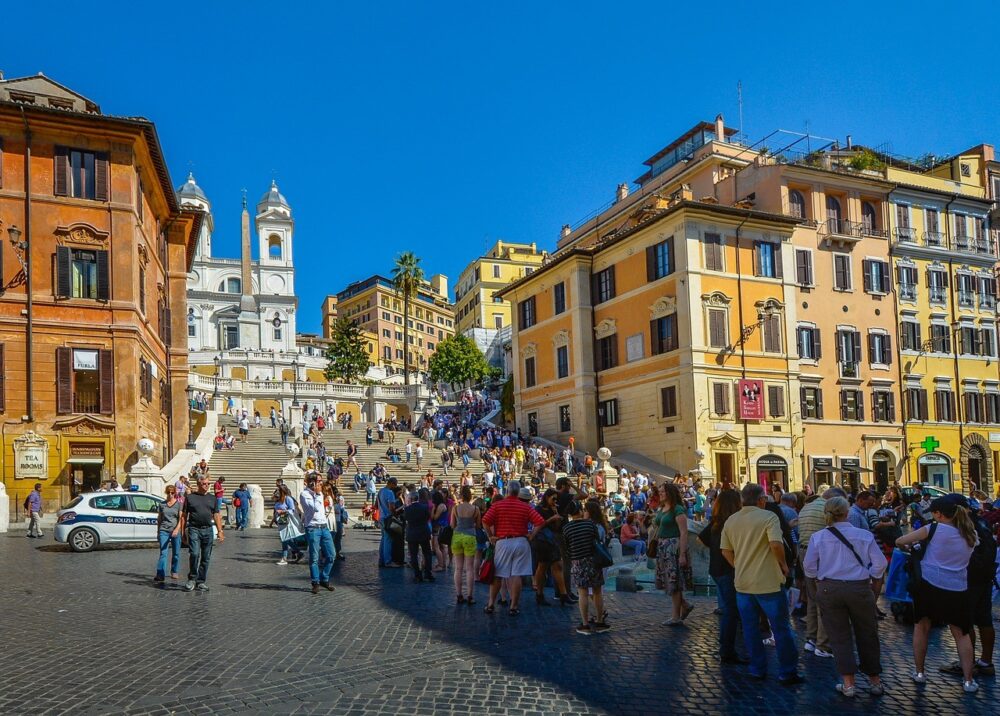Rome is a candidate to become a model for the fair and sustainable energy transition, with the birth of energy communities for renewable and solidarity. Thanks to a new regulation, the municipality offers photovoltaic areas and systems to encourage shared use of solar energy
Energy community: a model of sustainability and innovation
The Renewable Energy Communities (CER) represent an innovative paradigm for the production and management of energy. Based on the concept of collective self -consumption, they enable citizens, companies and institutions to share energy from renewable sources, reducing the costs and impact of the environment.
The regulation approved by Roma Capital Is the first of its kind in Italy and includes creating photovoltaic systems On public buildings, such as schools and municipal spaces, so that the energy is assigned to local communities. This approach promotes energy independence, the demolition of accounts and environmentalism, to create a virtuous circle that combines innovation and social inclusion.
The Leonarda Vaccari Institute pilot initiative
One of the most emblematic projects is that inLeonarda Vaccari InstituteA center dedicated to the help of people with physical and mental disabilities. A photovoltaic system of 82 kW is installed here, which not only guarantees clean energy for the structure, but you can also share surplus energy with other social realities of the historical Prati district.
The Roman project, financed by Banco Dell’Energia Foundation Van Milan is a concrete example of how the CER can become aids of social justice. Thanks to this model, access to energy is guaranteed at lower costs for those who need the lake, creating a system that fights energy treatment and supports the most vulnerable ties in the population. But let’s try to understand better.
The challenges of energy poverty and the role of the CER
Energy poverty is one of the most urgent issues of the ecological transition. In Rome, as well as in many Italian cities, countless families struggle to bear the costs of light and gas.
Thanks to the approved regulation, Roma Capitale directly supports the creation of CER in popular and peripheral neighborhoods, such as Casal de Pazzi, Don Bosco, Quarticciolo, Corvialle, Esquilino, Centocelle, Garbatella and Monteverde. The aim is to transform public spaces into “Energy Hub”, That is, the production and distribution centers of renewable sources, which prefer the self-power of local communities, the shared use of resources and the spread of conscious and sustainable consumption practices.
Renewable energy and impact on the environment: technological innovation
In this context, solar energy is nowadays the most efficient source for the low -carbon cities. In 2023 and 2024, Rome registered a record of photovoltaic installations, with a total capacity of 354 MW spread over more than 29 thousand systems. However, the challenge is not only to increase the production of renewable energy, but make sure that it is distributed fairly.
The CER approach makes it possible to overcome traditional logic of centralized energy production, aimed at distributed and community models. Fotovoltaic technology, combined with storage systems and intelligent networks, makes it possible to maximize self -consumption and to reduce dependence on the national electricity grid. This means less CO₂ emissions, less air pollution and greater energy benefit for the city.
Economic and social benefits of the energy community
Energy communities are not only a technological innovation, but a model of social economy that promotes energy solidarity. Families with a low income and organizations of the third sector can benefit from the faciled rates, reducing the impact of fluctuations for energy prices.
In addition, creating Cert generates new vacancies in the renewable sector, from the design and installation of the systems to the management of local distribution networks. The municipality of Rome, with the support of financial institutions such as BCC Roma, Banca Etica and Banca Intesa San Paolo, is developing subsidized financing tools to encourage the participation of families and small businesses.
A model for the future: Rome, Capital of the Energy Transition
With this project, Rome wants to become a national reference point for renewable energy. As mentioned by mayor Roberto Galtieri, the goal is to turn the capital into a laboratory of social and environmental innovation, in which energy and inclusion go hand in hand.
«The energy transition cannot be a privilege for a few, but must‘opportunities for everyone », The first citizen underlined during the presentation of the Regulation in the Capitol. “Thanks to this regulatory instrument, Rome creates the conditions for starting planning in all neighborhoods and to ensure that the‘Renewable energy will be a generally good “.
It is clear that the road is still long, but the path has been traced: a future in which energy is a right for everyone and not a luxury for a few is now a concrete possibility.

